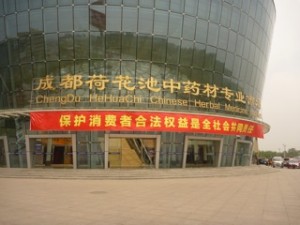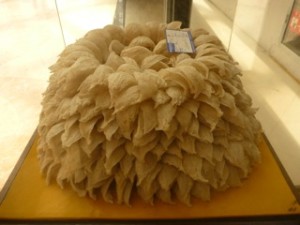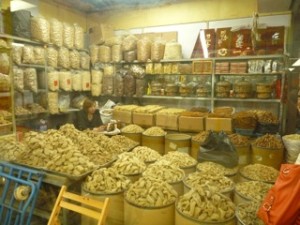
Chengdu Herbal Market
Imagine going to the mall where the only items sold were herbs. That was our experience at Chengdu Chinese Herbal Medicine Market. There were the expensive stores that carried high-quality herbs like Hong Hua (Safflower Flower), Yan Wo (Edible Bird’s Nest), and Chuan Bei Mu (Fritillaria) as well as controversial herbs like Dong Chong Xia Cao (Cordyceps; Caterpillar Fungus).

Yan Wo (Edible Bird’s Nest)

Chengdu Herbal Market
Beyond the fancy stores, it became more like a farmer’s market, with rows and rows of herbs in each stall. Some owners seemed bored with the foreigners gawking at their herbs while others were fascinated by a group of Meiguo (Americans) identifying herbs with their Chinese names. In those moments, I had never been more thankful to have spent four+ years studying the pinyin names of all those Chinese herbs. It finally paid off in my first Chinese herbal market. Thank you, AOMA. Xie xie.
